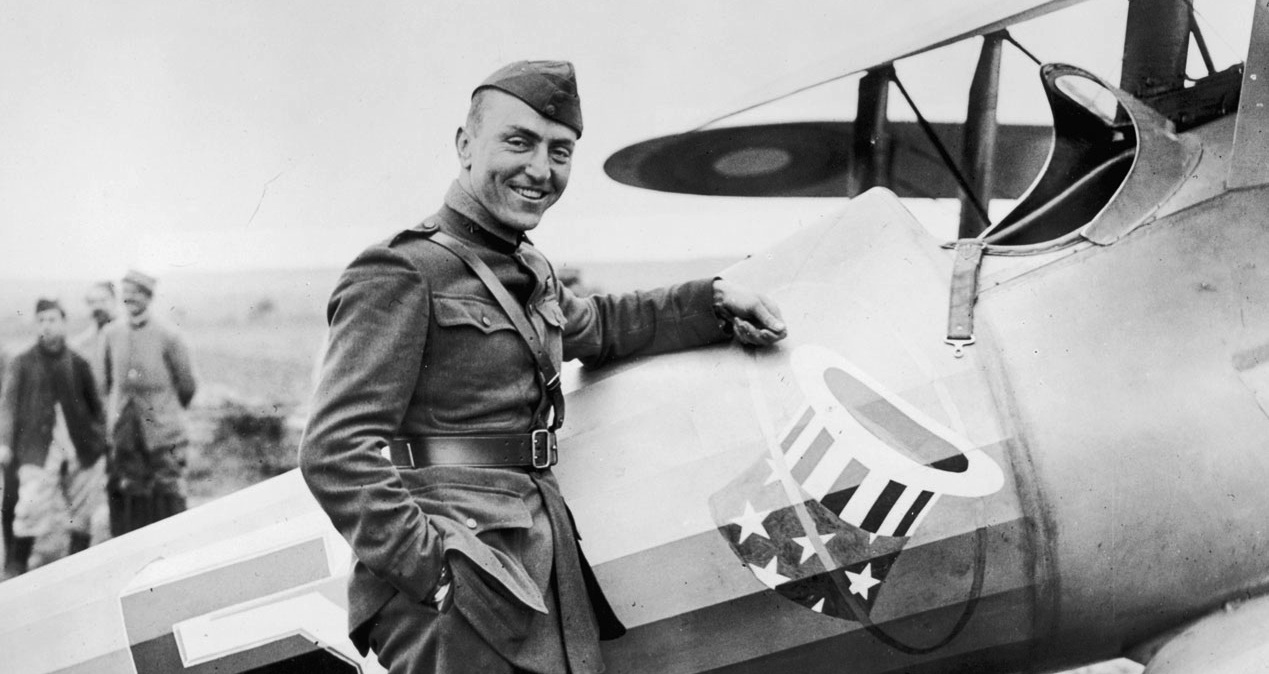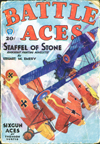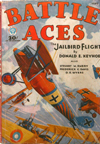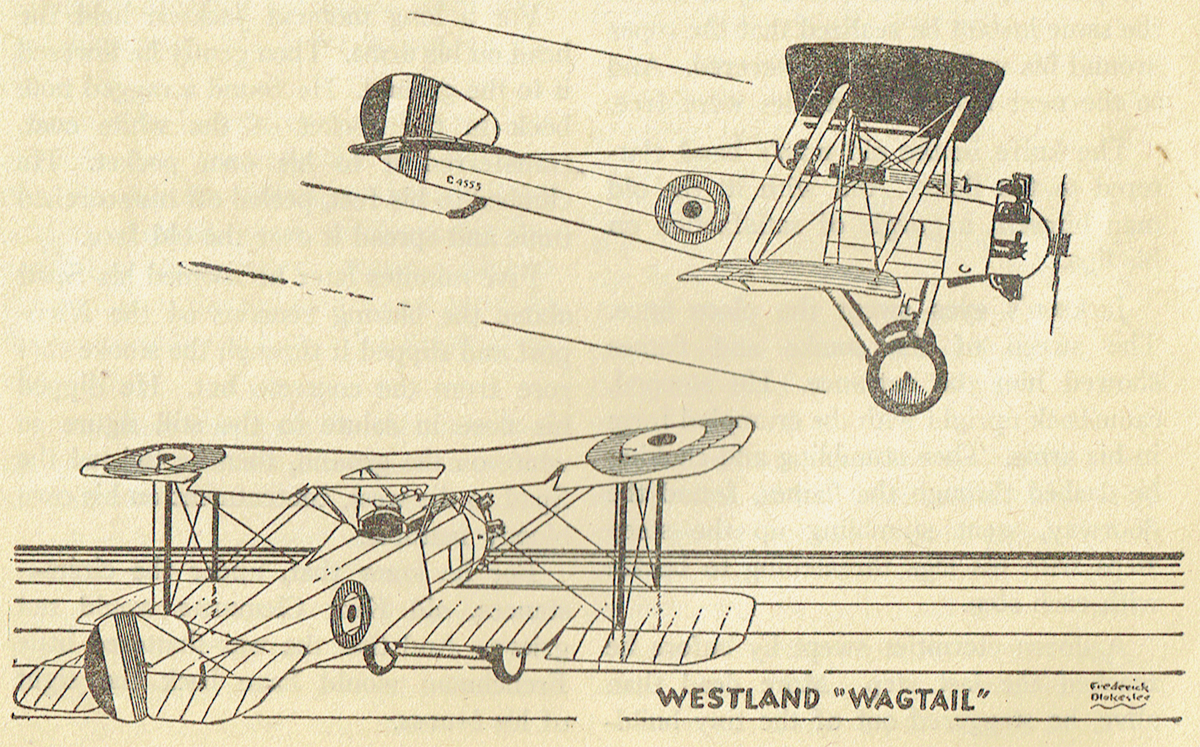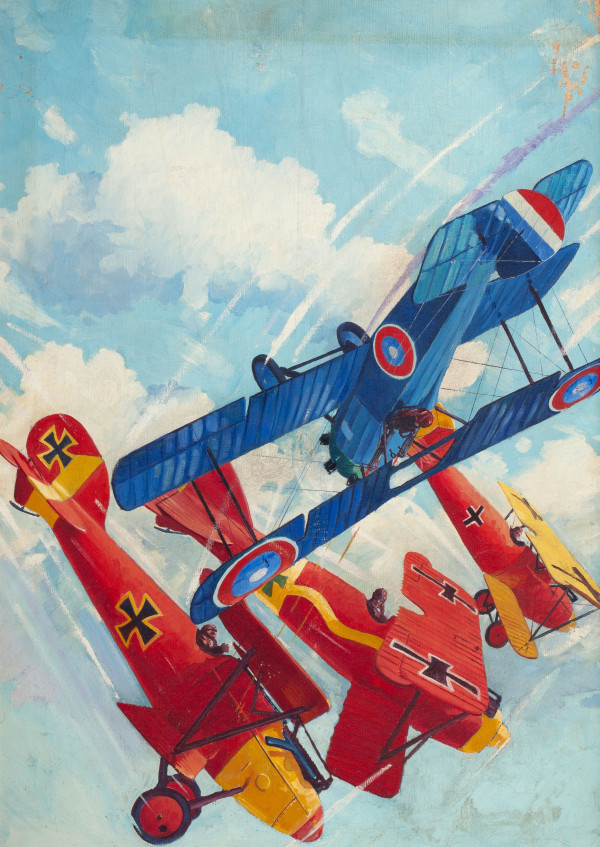THIS week we present “Niebling’s Phenomenal Feat”—The story behind Paul Bissell’s April 1933 cover for Flying Aces! Bissell is mainly known for doing the covers of Flying Aces from 1931 through 1934 when C.B. Mayshark took over duties. For the May 1932 cover Bissell presents the moment in the battle of Mauser raid where Raoul Lufbery became an ace!
Lufbery Becomes an Ace
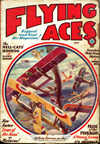 “PROCEED to their objective, the Mauser Munition Works at Oberndorf; there drop their bombs at points most destructive to the enemy positions; and then return to their home airdromes.”
“PROCEED to their objective, the Mauser Munition Works at Oberndorf; there drop their bombs at points most destructive to the enemy positions; and then return to their home airdromes.”
So read the orders for October 12, 1916, at all Allied airdromes located back of the front line and south of Verdun. Orders of Brass Hats, “—and then return”! What a chance! With the objective one hundred and fifty kilometers inside the enemy lines and the sky filled with Boche. Well, anyway, it would be a great show, and at least one pilot smiled, thinking that tomorrow might bring death, but most surely would bring the opportunity of becoming an Ace.
This was Sous-Lieutenant Raoul Lufbery, of the Lafayette Escadrille, with four official victories to his credit, who, with three companions, Lieutenants Masson, de Laage and Prince, had been ordered to fly guard patrol for the bombing planes and protect them from attack.
Arriving at the appointed rendezvous, they saw a sight then strange to any eye. Perhaps the largest concentration of air forces the world had yet seen was spread below them. Farnums, Breguets, Caudrons, Sopwiths and Nieuports, almost every type of plane yet developed by the Allies for work at the Front, was in this huge flying armada, which would strike desperately at one of the main centers of German munition supplies.
Turning east, the whole group passed through a terrific archie bombardment, but it was not until they neared Oberndorf that the real show began. Here the Germans seemed to come from all directions. A general alarm had been spread, and every available German ship had been pressed into service.” Single-seated scouts, double-seaters, and even big three-placers, planes seldom seen on the Front at that time, were massed ahead of the advancing bombers.
The larger enemy ships would charge in, boldly maneuvering to bring their swivel guns into play, only to find the sky suddenly raining lead as Nieuports and Sopwiths dived headlong from the blue, their guns blazing in defense of their bombers. Then flashes of crimson and black, as Albatrosses and Fokkers and Pfalzes attacked fiercely, striving to gain that deadly blind spot underneath the tail of the slow-moving bomber, or twisting and squirming to evade the fire of some Nieuport, and, by some quick renversement, bring the tri-colored cocarde full in their sights.
IT WAS from such a mêlée that Lufbery, pulling out for an instant to clear a jam of his gun, saw a German go down in flames before the withering fire of Norman Prince.
“Yeow! Number one for the Lafayettes! Good old Nimmie! Now for number two!” And he pushed his stick over. But that dive was never to be finished. At that instant a sudden impact in his cockpit told him that a German was on his tail. Instinctively he yanked his stick back hard against his chest. Up he zoomed, his head twisted around to find his enemy.
There it was, a huge three-place Aviatik, with three guns, and all of them’ blazing at him. A flip of his ailerons—a kick of his rudder—then down hard on his stick, and in an instant he was away from the fire of the Boche. A sharp climbing bank would, he thought, bring him back under the tail of the larger ship, but here the German pilot, an old hand at the game, was too crafty to be caught. Banking up sharply on his right wing he exposed Lufbery again to the open fire of his three gunners.
This was entirely too hot a spot to stay in, and Lufbery turned the nose of his little Nieuport sharply away, out of the line of fire, climbing rapidly to gain altitude, from which he might dive down on the larger machine. As he turned, a flash of red went by, followed by a streak of silver—de Laage on the tail of a Boche!
Now, below him, Lufbery could see the three-seated Aviatik, the gunners all set for his attack. Over he nosed his ship and hurled down at the enemy, but at the same instant the big plane banked around and he overshot his mark. In a fury he twisted back in a sharp renversement, this time approaching the plane from the most dangerous position, open to the fire of the gunners.
But the Germans were square in his sights, and straight on he flew, feeling a thrill as the pulsing guns answered to the squeeze of his hand on the stick. He could feel the German bullets spattering his plane. Another instant, and he turned to avoid a crash, just as the huge Aviatik, the pilot dead, slipped crazily off on one wing. A telltale whisper of smoke, and then a burst of flame as it headed down to where falling chimneys and bursting roofs showed that the Allied bombers had
found their objective with fearful accuracy.
THAT was one hundred and fifty kilometers inside the German lines, and it meant one hundred and fifty kilometers of scrapping to win their way back through. The Germans took their toll. However, it had been a great show, and very successful from the Allied viewpoint. Much havoc had been wrought to the munitions center, and the Allies, too, had taken their toll in German ships. Three more victories were to the credit of the Lafayette Escadrille, for de Laage had brought down his German also.
A happy reunion awaited them, had not Fate here taken a hand. The four pilots, blown slightly off their course, and running short of gasoline, were forced to land at the French field of Corcieux, a field strange to all of them. It was almost dark as they eased their ships down, and Prince, unaware of some high tension wires strung across one end of the field, crashed into them as he glided in. With characteristic courage he refused to have his comrades move him until flares had been lighted to prevent some other pilot crashing as he had done.
Two days later he died in the hospital. The famous Mauser raid was history. Lufbery was an Ace, and Norman Prince an international hero.

“Lufbery Becomes an Ace”
Flying Aces, May 1932 by Paul J. Bissell
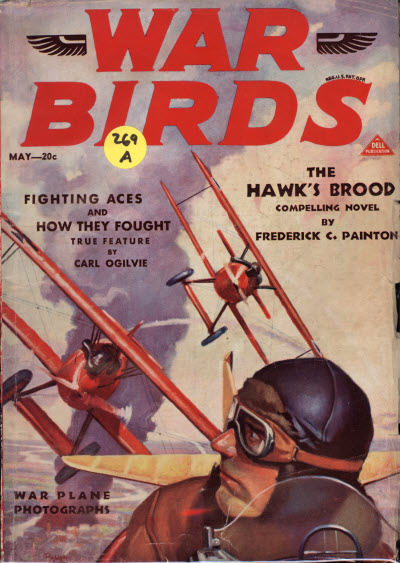 of his birthday yesterday, we have a story from the pen of a prolific pulp author O.B. Myers! Myers was a pilot himself, flying with the 147th Aero Squadron and carrying two credited victories and awarded the Distinguished Service Cross.
of his birthday yesterday, we have a story from the pen of a prolific pulp author O.B. Myers! Myers was a pilot himself, flying with the 147th Aero Squadron and carrying two credited victories and awarded the Distinguished Service Cross. 




 a story from William E. Poindexter. Poindexter’s work appeared frequently in the supporting pages of the air pulps of the 1930’s. Here, he gives us the tale of Little Ossie Timpkins—who asked nothing more than to be considered a fighting man. But due to his stature, found himself on terminal kitchen duty—until he thinks he found a way to prove to himself and the others that he truly is “A Fighting Man!” From the pages of the May 1932 Flying Aces.
a story from William E. Poindexter. Poindexter’s work appeared frequently in the supporting pages of the air pulps of the 1930’s. Here, he gives us the tale of Little Ossie Timpkins—who asked nothing more than to be considered a fighting man. But due to his stature, found himself on terminal kitchen duty—until he thinks he found a way to prove to himself and the others that he truly is “A Fighting Man!” From the pages of the May 1932 Flying Aces.
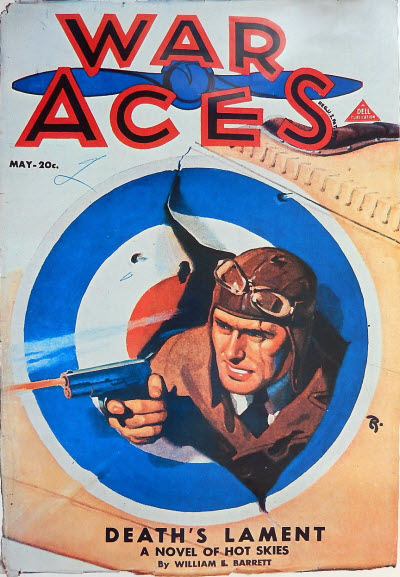 of our Barrett celebrations we have “Death’s Lament”—the story of Billy North who left home to fight in the war to avenge his brother’s death, but is stuck flying in the observation squadron where they fight the war with pencils rather than bullets!
of our Barrett celebrations we have “Death’s Lament”—the story of Billy North who left home to fight in the war to avenge his brother’s death, but is stuck flying in the observation squadron where they fight the war with pencils rather than bullets!

